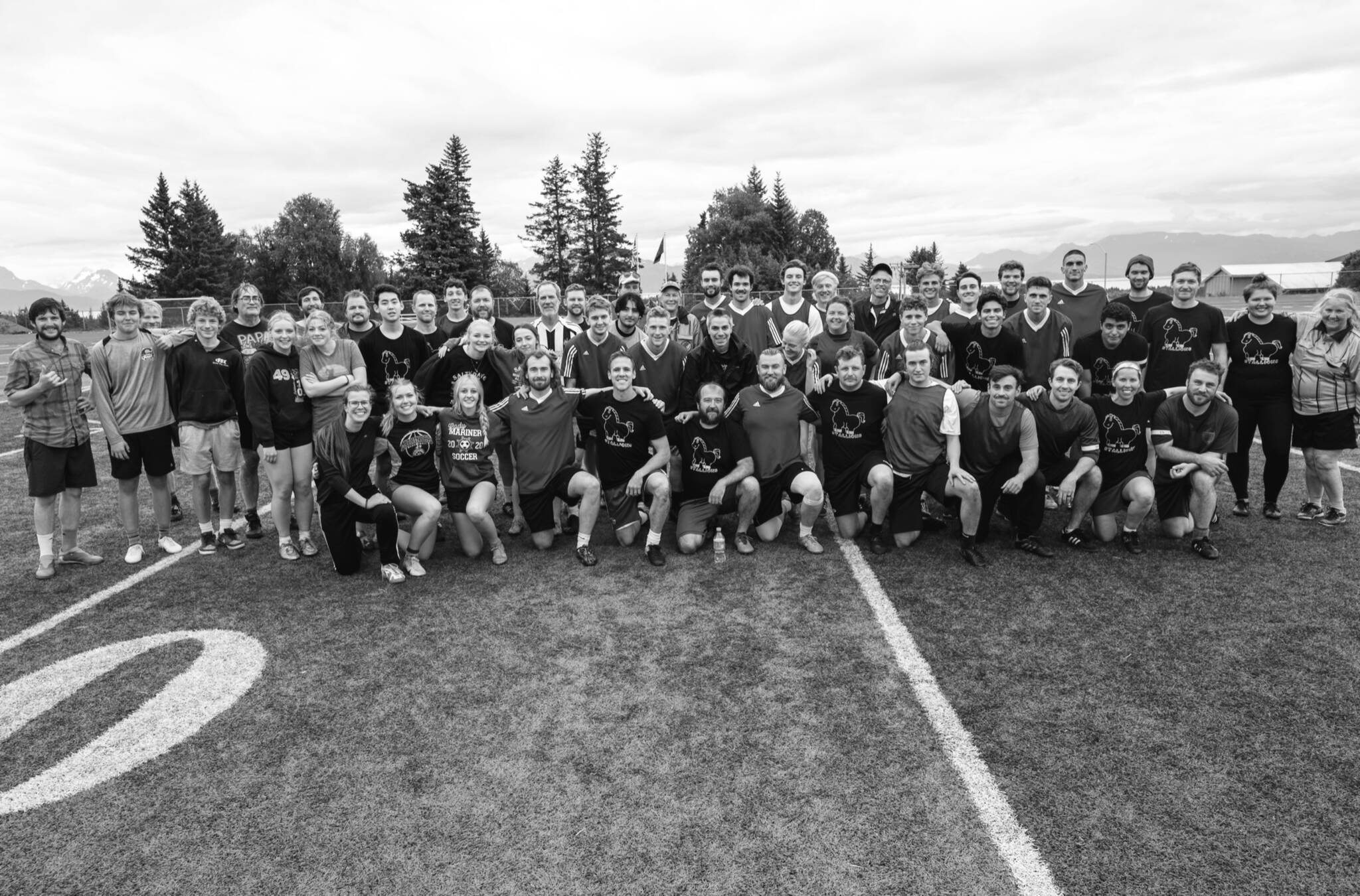Imagine a park ranger, a lawyer, a teacher, an artist, a fisherman, a student, an engineer and more all working together. The group possesses a whole range of political and religious views. They give directions and listen to one another. They move in directions which their teammates allow them to. They encourage one another to use all their unique gifts, consoling one another after mistakes, and celebrating all the small victories.
This sounds like something of an idyllic utopian fantasy, much too optimistic to exist in our age. How could people so different tolerate each other, let alone support one another? For many readers worn down by the enmity so common in our social climate it sounds impossible.
Let me return to this after I share something I enjoy doing —
I like playing soccer: I like running, making passes, and playing defense.
I love playing community soccer: I love running hard to try and provide an option for someone hustling down the field, making passes to a teammate who sees the field differently than I do, and playing defense against my long-time friend who has always bettered me through our competition.
I began attending community open soccer when I was a high school student of Homer. I remember feeling intimidated by this group of older people who all seemed to commit themselves to the sport during the two-hour sessions. I remember how playing with them I no longer was treated purely as a kid, but now bore some responsibility to the others as they did to me.
I also remember being extremely shy, and feeling scared to say anything to these adults I was playing with.
Now, years later, I am one of the “older people.” The collective is no longer an anonymous group of superior adults, but are my friends Katie, Jason and Pedro. As I have grown up, new faces have come to play and some have departed.
Returning home from college for Christmas break, I would eagerly attend as many community soccer sessions as possible. In the summer I made sure to do the same. Here, in this space, the unlikely becomes actual. And not just on a miraculous occasion, but multiple times a week.
There are questions about community and connection. How do we create it? How do we sustain it? What are its impacts?
A few observations from my own time playing Homer pick-up soccer:
Firstly, community soccer helps to give me a voice. As I wander down my path and find myself growing in strange or ambiguous ways, I hear myself speaking differently at open soccer. Once I was a shy high school kid who could hardly say hello, and now I find myself laughing, communicating, and singing in the same sort of space.
Secondly, everyone brings something to the group. Were it not for the whole cast of players, regardless of skill-level, we could not play. We are not contractually obligated to attend, nor are we bound by our families, yet people continue to show up. Without people showing up, not a single individual could play.
What’s more, each person who descends onto the Homer High field or enters the snow-white shelter of the SPARC brings their own unique disposition. A night playing could be, and often is, radically altered by the participation or lack of certain people because everyone contributes.
Lastly, people of all walks of life join together with a common goal. The image which I described before, of people of difference uniting, is an ordinary occurrence here. I have played with people whose lives I would have never thought would overlap with mine. Sport, I am continuing to recognize and appreciate, transcends athletics.
While so much can be stirred into chaos, and consistent community can seem elusive, Homer’s pick-up soccer has remained a staple for me, as it will into the future.
I would like to end by thanking Ginny Espenshade for being the cornerstone of this group for many years and even more players.


